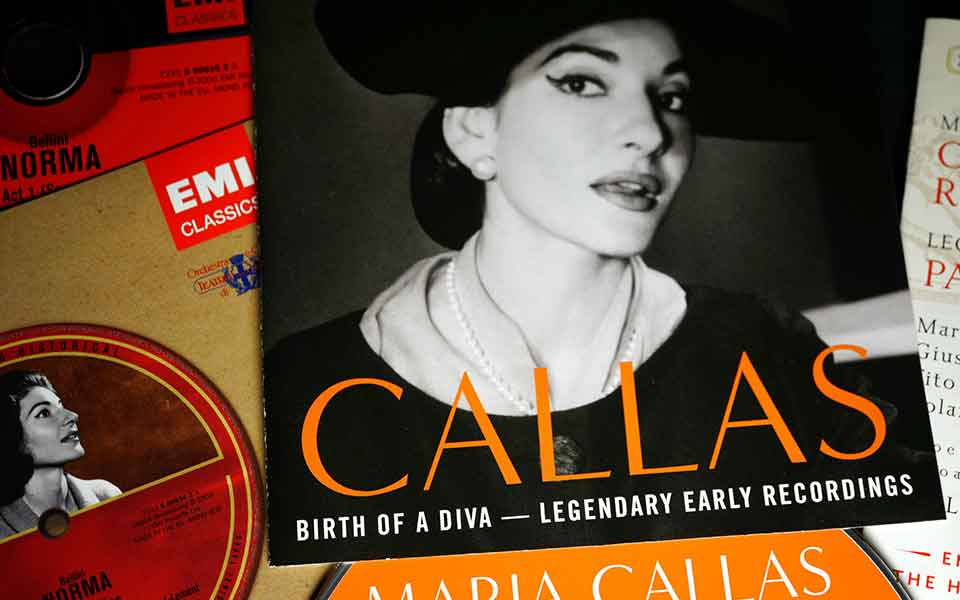Located in the heart of the Greek capital, in a beautiful three-story neoclassical building on Mitropoleos Street, the Maria Callas Museum opened its doors to the general public on Thursday, October 26. The opening coincides with what would have been the legendary soprano’s 100th birthday on December 2nd.
The newly-established Museum – the first of its kind dedicated to Maria Callas – presents priceless objects from the singer’s life, including photographs and portraits, rare live recordings, and a unique collection of personal items.
“Each item contributes in creating a comprehensive image of this astonishing woman,” Kostis Bitzanis, the Museum’s project director told Reuters.
“Maria Callas is one of the biggest brand names world-wide, she is a woman who became a legend,” he said.
Among the personal items on display are a pair of Callas’ prescription glasses, costumes, and a notebook she used to memorise parts of her roles. A highlight is the blue velvet dress she wore after the memorable 1955 performance of Verdi’s “La Traviata,” at Milan’s La Scala.
Visitors are introduced to Callas’ vast repertoire of music through speakers, headsets, and a series of digital displays, positioned throughout the Museum.
The Museum was originally scheduled to open in 2019 but delayed in the wake of the Covid-19 pandemic. Since then, the 1,070-square-meter building, owned by the Municipality of Athens, has undergone extensive refurbishment, based on an updated study and design by Andromache Gazi, an associate professor of museology at Athens’ Panteion University.
The idea for a museum celebrating the life and artistic career of Maria Callas took shape over a decade ago, inspired by a collection of her personal belongings that went up for auction in Paris. Speaking to Kathimerini last year, Bitzanis said: “Once the idea of housing the museum in one of the old warehouses at the Technopolis gasworks complex [in Gazi] was rejected, this municipal-owned building [on Mitropoleos Street] was located and the architectural studies could commence.”
With a budget of over a million euros, and with the dedicated support of the Maria Callas Greek Society, the new Museum has been designed according to the latest museological standards, housing around 500 exhibits, both physical and digital. Spread out over two floors and four separate rooms, the exhibition tells the story of Callas’ remarkable yet tragic life, shedding light on her personality, and the various individuals who served as her greatest inspiration. On the second floor, visitors can listen to parts of Callas’ signature performances, including the aria “Casta Diva” from Bellini’s opera “Norma,” and hear her teaching at the Julliard School in New York in 1971-1972.
Much of the exhibition has been donated to the Museum from dozens of private collections in recent years, including 50 objects from the personal archives of Konstantinos Pilarinos, President of the Maria Callas Scholarship Association, and his wife, Viktoria.
Maria Callas: An Enduring Icon
Maria Callas (1923-1977) was a renowned Greek-American soprano, widely regarded as one of the greatest opera singers of the 20th century. Born Maria Anna Sophie Cecilia Kalogeropoulos in New York City to Greek parents, she later moved to Greece and began her opera career in the 1940s. She was celebrated for her extraordinary vocal range, dramatic intensity, and versatility in portraying various operatic roles.
Callas was credited with the almost single-handed revival of the Italian “bel canto” vocal technique, and excelled in operas by the great Italian composers, Verdi and Puccini. Audiences praised her performances, which were marked by emotional depth and a powerful stage presence. She was also known for her dedication to her craft and the way she transformed opera by emphasizing both vocal and dramatic aspects, setting new standards for opera singers.
Her tumultuous personal life, including a high-profile affair with Greek shipping magnet Aristotle Onassis, added to her public persona. Despite a relatively short career, Maria Callas left an indelible mark on the world of opera, and her recordings and performances continue to be revered by opera enthusiasts and musicians.
She died of a heart attack in Paris in 1977, aged 53.
With information from Reuters.












